At my phenology site, I spotted eastern grey squirrel tracks. The tracks had four distinct prints, which is expected from a galloper. There were two smaller ones in the back and two longer ones in front, from the squirrel’s hindlegs.
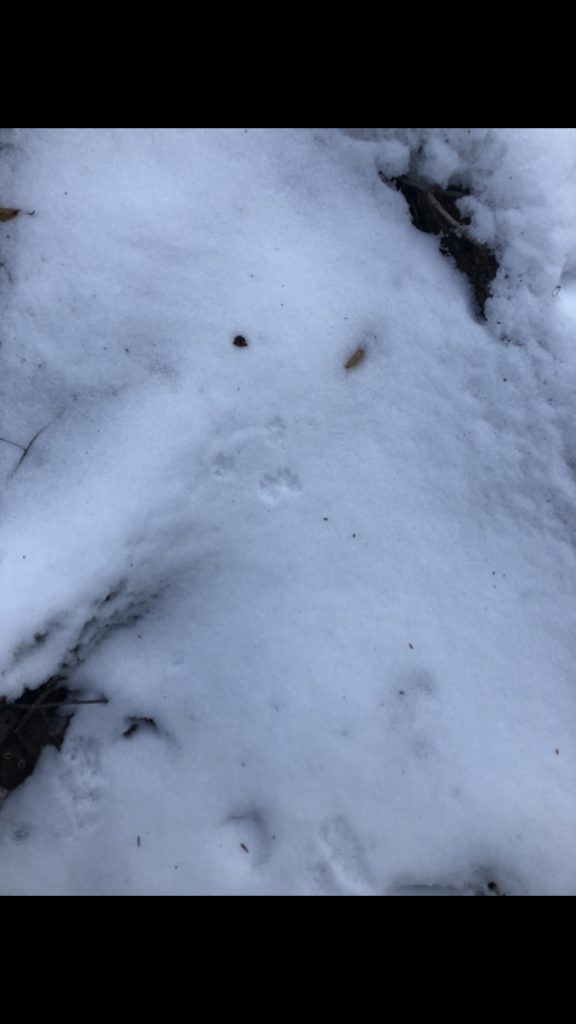
Eleanor Jaffe. (Student). (2020). Squirrel Tracks. 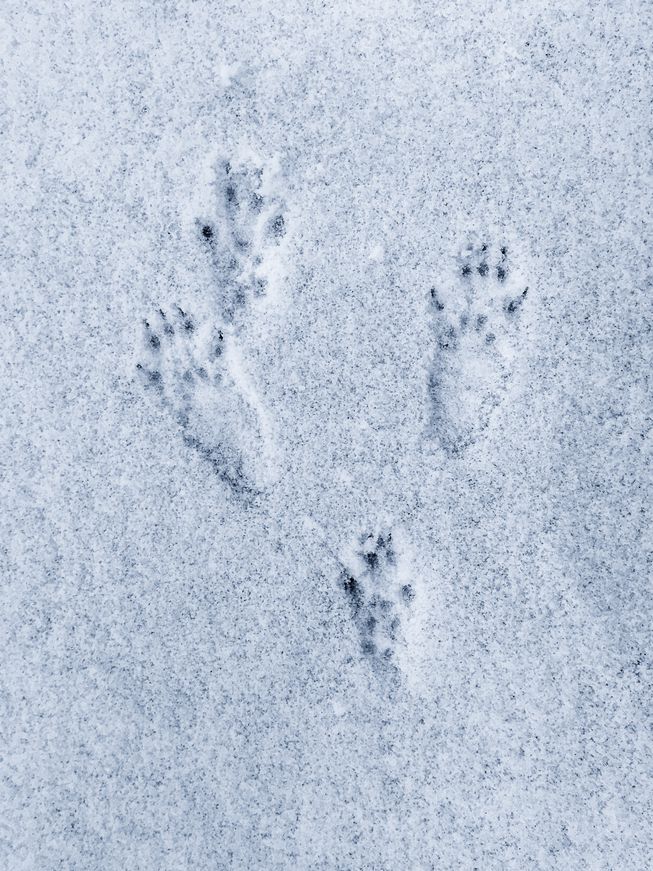
Eleanor Jaffe. (Student). (2020). Squirrel Tracks 2.
During the cold winter months, grey squirrels don’t hibernate, instead, they make dens in the trunks of trees, or they build small nests out of branches, called dreys (Schweig.2015.)
Relying on their fat reserves and food caches to survive the cold winter squirrels have to build up layers of fat. These extra layers come in handy when they have to venture out of their dens to forage for food(Where Do. 2019).
Knowing how hard it can be to find food in the winter months, under the layers of snow, squirrels build up caches of nuts and seeds, taken from near-by tree species in the weeks before the cols.
Unfortunately for the squirrel, just because its winter and many animals are hibernating doesn’t mean that they can take their eyes off the sky. Owls, one of the squirrels most significant predator, are very active during the winter. Some of the smaller mammals that also prey on the squirrel are active as well. Foxes and skunks remain relatively active which means that during winter there are both predators in the sky and on the ground(Gracheva. 2017).
Two species that play a large role in the squirrel’s lives during the winter are the beech tree and the fox. Squirrels use beech trees to build their homes during the winter. Tracks can be found at the base of beech trees because squirrels use them to escape from predators.
One of the common predators squirrels would be scampering away from is the fox. Foxes are relatively active during the winter months, which means that squirrels need to be aware when they are down in the ground foraging for food, which would result in tracks that are far apart, as the squirrel tries to get away from the fox as fast as possible. The way the squirrel interacts with these species is very connected. They rely on the trees to protect them from the fox. Preditors and habitat are some of the most important aspects of a squirrel ecosystem.
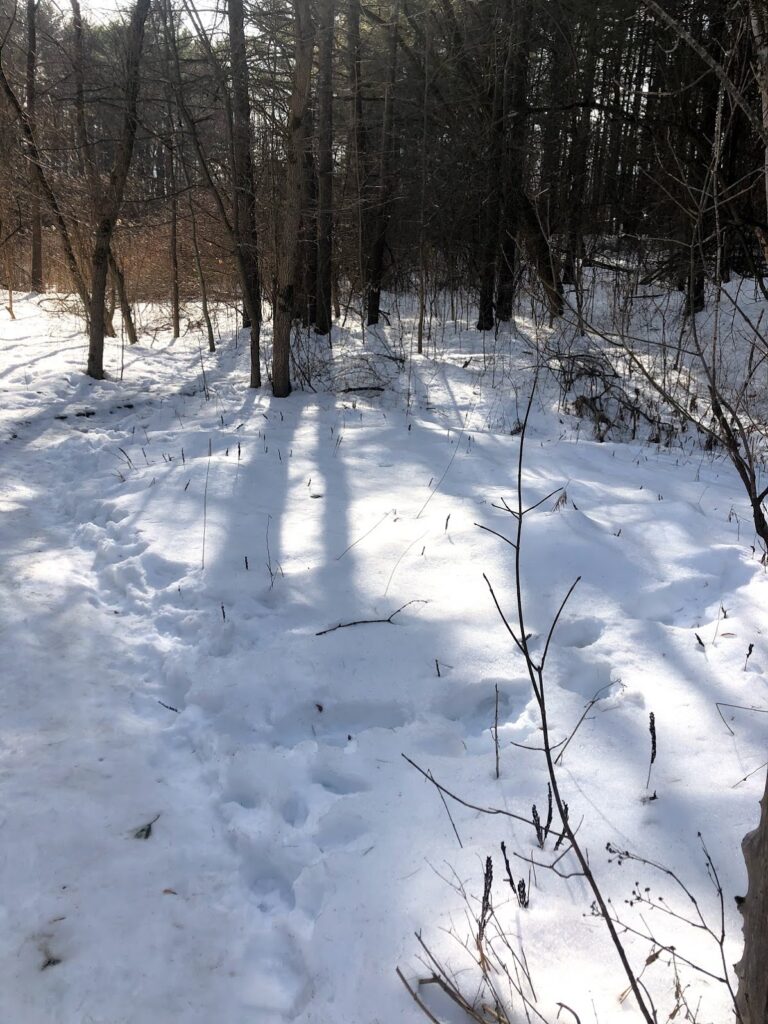
Eleanor Jaffe. (Student). (2020). Phenolgy site . Eleanor Jaffe. (Student). (2020). Phenology site 2 . 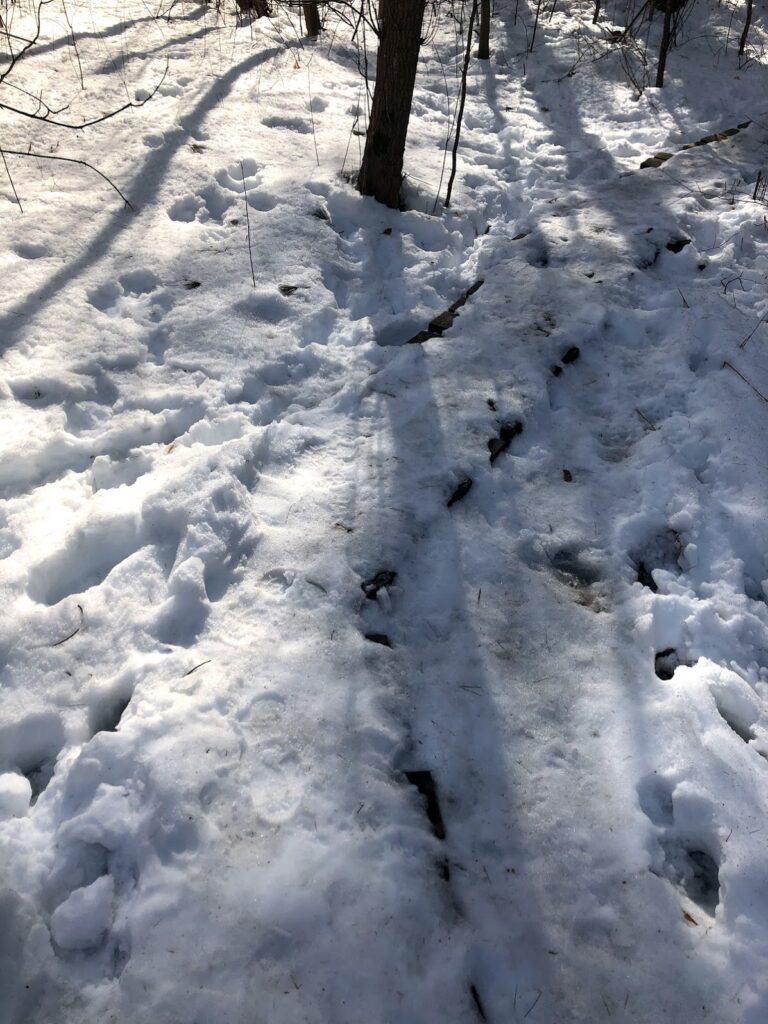
Eleanor Jaffe. (Student). (2020). Phenolgy site 3 . 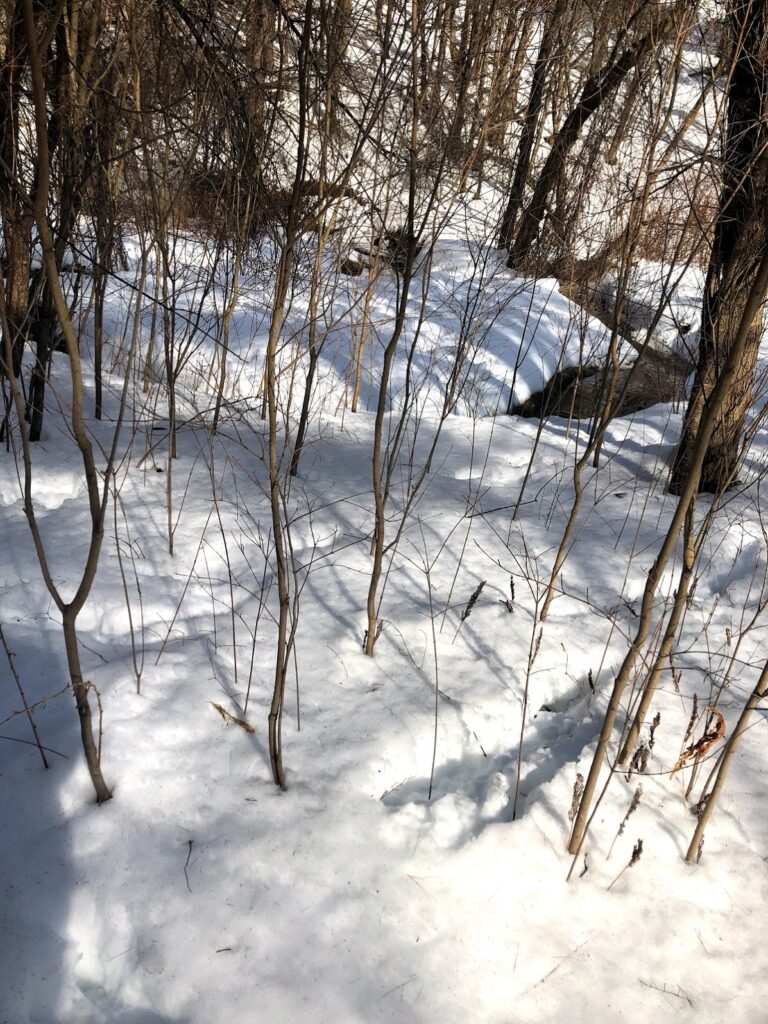
Eleanor Jaffe. (Student). (2020). Phenolgy site 4 .
My site appears to have changed a lot since my last visit. The snowpack was thick everywhere. The footbridge, which usually sits about 10 inches above the floodplain, was indistinguishable from the ground below it.

Eleanor Jaffe. (Student). (2020). Bare Trees. 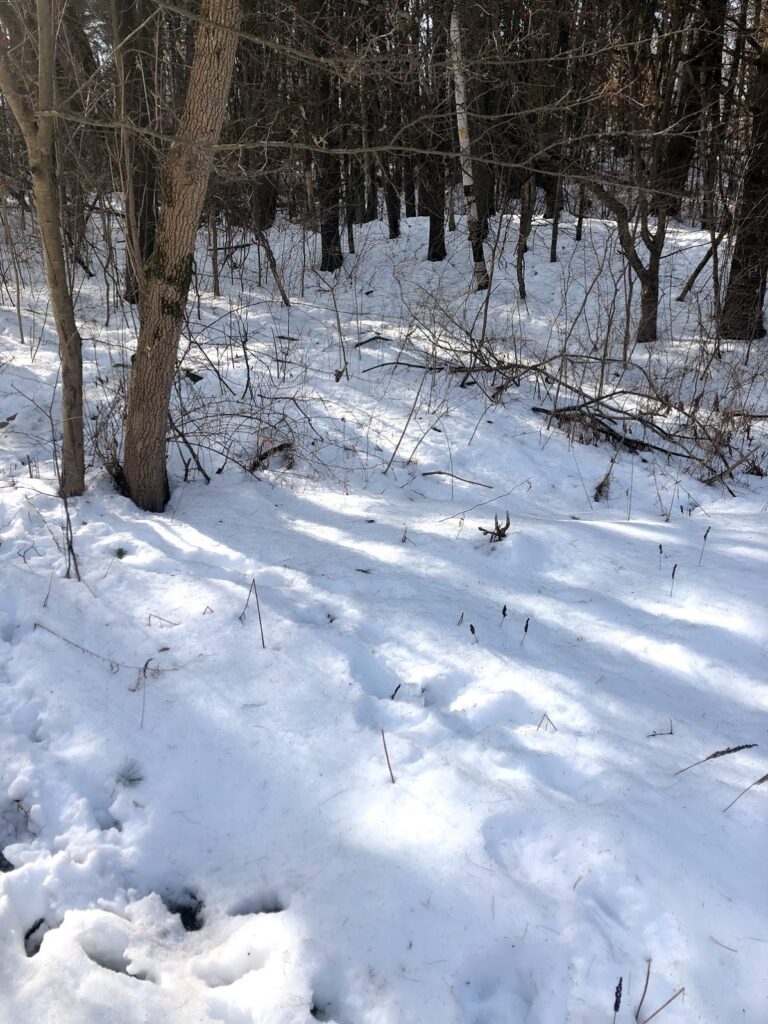
Eleanor Jaffe. (Student). (2020). Bare Trees 2.
The trees in the backdrop have not lost all their leaves, so you can see through them to another part of the path, which makes the space feel bigger, and not quite as safe and secluded. Along with the loss of the leaves, most of the other vegetation that had survived the beginning of winter was deaf and compacted under the feet of snow.
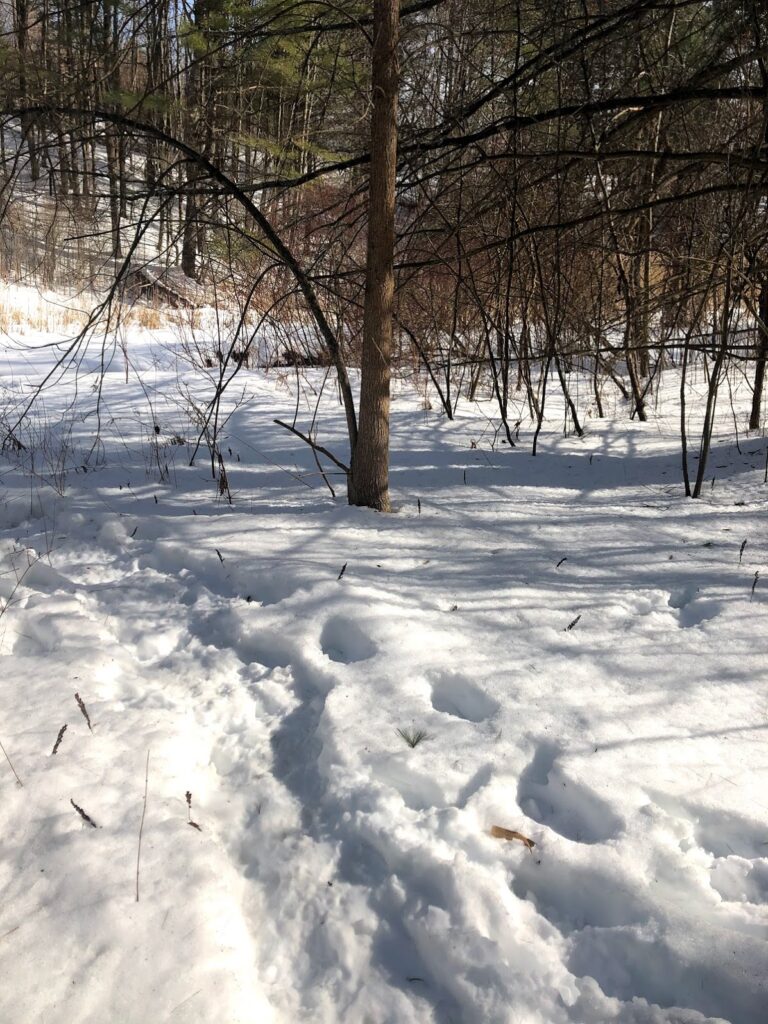
There was also a set of footsteps in the middle of my phenology site, which is usually dominated by plants and appears untouched by humans, but now with all the snow someone felt invited to walk through the center of this small flood ecosystem.
Another thing I noticed was the silence, usually, I can hear at least some bird call, or bugs buzzing around but on this warm February day all I could hear was the crunch of my footsteps on the icy path
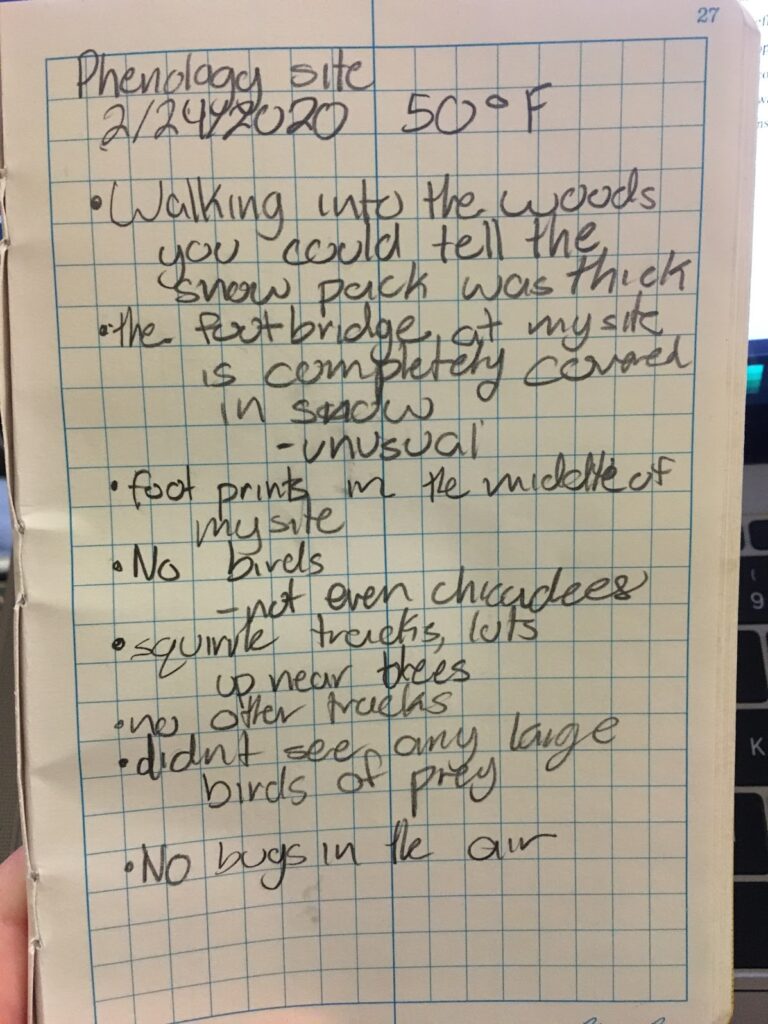
Sources:
Gracheva, & Gracheva. (2017, December 19). How Do Squirrels Deal With Cold? They May Not Feel It Like Us. Retrieved from https://www.nationalgeographic.com/news/2017/12/animals-hibernation-winter-cold-squirrels/
Schweig, S. V. (2015, November 18). How Do Squirrels Keep Warm In Winter? Retrieved from https://www.thedodo.com/how-do-squirrels-keep-warm-in-winter-1462545052.html
Sokko, N. (n.d.). Squirrel Tracks. Retrieved from https://www.mnn.com/earth-matters/animals/blogs/animal-tracks-you-can-identify-your-own-yard
Where Do Squirrels Nest In Winter?: Orkin Canada. (2019, April 19). Retrieved from https://www.orkincanada.ca/blog/squirrels-in-winter/
